

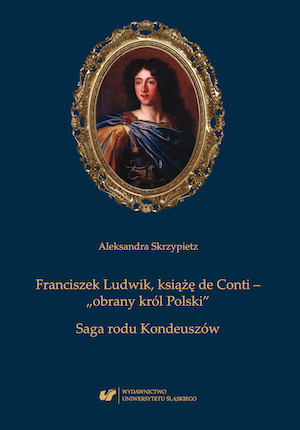
François Louis de Bourbon, prince of Conti, Louis XIV’s cousin, was an important figure at the royal court. However, especially the behaviour that he exhibited in his youth was a source of numerous problems for him – he implicated himself in homosexual scandals/affairs which were not tolerated by the king; he decided to join, along with his brother, the army which fought against Turkey, and he abused the trust of the monarch; he maintained correspondence which abounded in unfavourable and even derisive remarks about the monarch. All of these things accounted for the fact that he was not in the favour of the Sun King. However, the latter – recognising the position of the relative – did not forbade his presence at the court. François Louis married a cousin, one that also represented the top-ranking court circles, and he did not stain his reputation by marrying an illegitimate daughter of the king – their union was characterized by purity of blood. The prince of Conti also enjoyed great popularity among the representatives of the court society, and he maintained closest relations with the successor to the throne, which must have been a source of concern for the king. Therefore, we do not know whether the decision to appoint the prince as the candidate to the Polish throne after Jan III Sobieski’s death was a token of distinction or punishment for a life of rebellion. The lost election and a number of other life-related failures weakened the position and the popularity of the prince in the court society.The book constitutes an attempt to explain François Louis’s attitude to his candidacy to for the Polish throne – heretofore, one claimed that he was firmly against his candidacy. However, the author does not confine herself to a presentation of a life of “the elected king of Poland”, for she attempts to demonstrate how the life of a pure-blood prince in the second half of the 17th century differed from the activities of a number of generations of his ancestors, who were also rebellious and who were eager to oppose the will of the rulers. Such an approach facilitates the presentation of the differences in the attitudes of royal cousins, the representatives of the de Bourbon family across 150 years – from the moment which preceded the reign of Henry IV until the early 18th century, and also to outline the motivation which directed his actions. François Louis owed his position at the court not only to his background but also to the representatives of the closest milieu of the king, whose makeup was formed personally by the Sun King himself. Therefore, the author intended also to present how the balance of power at the court was maintained by the decisions of the monarch, and also to demonstrate whether these decisions were arbitrary or mitigated (corrected, modulated, moderated) by the interests and influences of various peoples, reasons and political intentions.
More...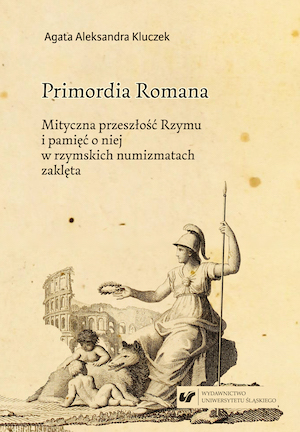
The focus of this study is the mythical-ideological content of iconography introduced on Roman coinage, giving us an idea about the ancients’ perception and understanding of the past. This past is a construct emerging from the founding myths, or stories about heroes from Rome’s beginnings set in the early, legendary phase of its past. Among them was Aeneas — the forefather, who was a reminder of Troy, and Romulus and Remus, the sons of Mars and founders of the city (conditores Urbis), whose childhood fate heralded a great future of Rome and whose deeds led to the birth of the City (Urbs).The past evoked by monetary representations of these characters is reconstructed, the origins and early history of the Romans are explained. In coins, whose content draws on that past, one can see monuments to Rome’s ancient history: memoria rerum Romanarum. Allusions to the earliest beginnings stemmed from the expectations and goals of the issuers of coins. Elements of the Roman myth were brought back from tradition to create an image of gentes or individuals by metaphorically erecting their monuments. In this way, a strong bond was forged between the mythical past conveyed in myths and the issuer’s contemporary times. The past captured on coins changed according to the expectations and goals of their issuers, while coins were primarily „monuments in miniature” to polititians and emperors and were their way of showing recognition for Rome’s tradition and past.Starting from the 3rd century BCE and continuing to as late as the 4th century CE, on Roman coinage there appeared imagery invoking Rome’s origins and early beginnings. Hidden in this imagery was the knowledge about select episodes from the founding tradition possessed by the Romans of that time.More importantly however, these monetary depictions prove the attractiveness and significance of particular mythical themes. At the same time, the contents on coinage provide exceptional examples of the updating and politicizing of the Roman myth. It was manipulated by means of confining it to certain themes while abandoning others. Modifying the themes drawn from myths was to a certain extent determined by the limitations imposed by the numismatic vehicle itself, where there was no room for lengthy inscriptions or elaborate iconography. As a result, only simplified, symbolic versions of stories about Rome’s beginnings were depicted on coinage. They primarily involved images of divine, human, and animal heroes: Mars and Rhea Silvia, Aeneas, Romulus, a she-wolf, etc.Interestingly, however, the message concerning Rome’s origins and early history has not lost any of its vividness over the centuries. These images were presumably not seen as solely mythical episodes but served their issuers’ current goals and interests. Their evolving consisted in a gradual deepening of the significance of singular iconographic themes as they were linked with universal values. These values were either expressed directly in inscriptions accompanying depictions or emerged from the images of the mythical heroes preserved by tradition and transposed into the needs of state ideology. Herein lies the uniqueness of the imagery referring to Rome’s earliest beginnings and most ancient history, as well as the attractiveness of this material for study.The first part of this book discerns the themes featured on coinage of the founding myth from Aeneas to the royal epoch. Rather than reconstructing mythical stories or, based on them, delivering a conceivably consistent and logical lecture, the author attempts to explain the sense of images featured on coins and medallions through references to the literary tradition. This part points out the similarities, originality, or uniqueness of solutions applied to coinage in relation to a broader iconographic tradition. Each successive chapter is devoted to the following heroes: Aeneas, the parents of the founders — Mars and Rhea Silvia, next the she-wolf, Remus and Romulus, and the heroes from royal times — anonymous Sabines, Tarpeia, and Roman kings. The myth reflected on Roman coinage boils down to these characters who — represented in the iconography of coins and medallions — evoke associations with events from the origins and earliest history of Rome.Part two orders the source materials chronologically from the Republic to the years of the Constantine dynasty rule. Succesive chapters address who, when, why, and what particular mythical themes were chosen for their issues. During the Roman Republic, attention was drawn to familial issues, where the Trojan myth was one of the many possible themes articulating the noble background of a gens. The high status of the Julii, especially Gaius Julius Caesar (C. Iulius Caesar), then Augustus, and generally the Julio-Claudian dynasts changed this state of affairs: the private Trojan myth advanced to the status of a state myth. The coin imagery reflected this proces to a certain extent, in it, primarily connecting the themes of Aeneas and Romulus with depictions of the Temple of Divus Augustus. Subsequently, rulers mainly used the theme of Rome’s she-wolf. It was used on a large scale especially in the reign of the Flavian dynasty (69—96) and Maxentius (306—312), but also by other emperors, who sought ideological support for their reign and thus demonstrated their attachment to tradition.This part also shows the reappearance of various mythical themes in the context of anniversaries in the reign of the Antonine dynasty and the “Crisis of the Third Century”. Celebrating the foundation of the City (dies Natalis Urbis) during Hadrian’s rule (117—138) and its subsequent anniversaries, the 900th anniversary in the reign of Antoninus Pius (138—161), and the millennium in the reign of Philip the Arab (244—249) was a favorable occasion for remembering Rome’s beginnings in monetary propaganda.The focus of part three is imperial virtues, virtutes, which were illustrated by three principal iconographic themes, bringing forth the heroes of Rome’s founding myth. They are: Aeneas, mostly depicted as the one who carries out the father and leads out the son, saving them from the danger of death (Pius Aeneas); the she-wolf who takes Romulus and Remus under her care, nurtures and rescues them (Lupa Romana); Romulus depicted as a warrior and a triumpher in one (Romulus tropaeophorus). These three iconographic themes, featured in numerous variants, served as representations of the three values. They are the following: pietas, aeternitas, and virtus. The extent to which the images of Aeneas, the Roman she-wolf, and Romulus were presented in this sense shows their emblematic character. It also proves an immanent connection between the sense of such depictions and primary values in the Roman state, important for the continuity of the empire.Part four begins with references to the origins and earliest history of Rome and their representations on medallions, that is occasional issues, and to a special group of imperial coins bearing replicas of images previously used by other issuers, called imitation and restitution coins (nummi restituti). They offered an exceptional opportunity to comment on the rulers’ approach to the mythical past. In part four, there is also room to discuss the character and scale of images concerning the myth of Rome’s foundation in depictions on provincial coins and the contorniate. Next, the book provides a synthesis of the studied imagery. The numismatic representations have been discussed in terms of their themes and originality. The words inscribed on coins have been analyzed along with the significance of inscriptions as commentary to images.Finally, in the concluding chapter, the determinants and regularities in the selection of themes from the Roman myth have been indicated. Firstly, it has been noted that favorable conditions were created by the then current situation in the empire, emperor’ s personality, and issuer’s own interest, the latter being the interests of gentes during the Republic and those of rulers — the strenghtening of their power — during the empire. Secondly, it has been emphasized that the choice of mythical themes was not random. They were not commonly used, but were always part of political agenda of the issuers.Focusing on the three leading themes: Aneneas, Lupa Romana, and Romulus tropaeophorus, one can discern three periods of their appearance on Roman coinage. The first comprises, generally speaking, the 1st BCE and the second half of the 1st CE. The popularity of the Aeneas theme in that period is well-documented and unprecedented before or after. All the three themes coexist on the coinage from the years c. 120—160. At that time, not only political circumstances and emperors’ tastes determined the choice of those themes, but, as can be inferred from other contemporaneous artifacts, they were also part of certain artistic-ideological convention. The beginning of the next period is marked by Rome’s millennium and its end in the middle of the 4th century. An extremely popular image during the first half of this long period of time was that of a warrior striding with a tropaeum on his arm, while the theme of Lupa Romana, characteristic for this late period, remained a long-lasting preferance.
More...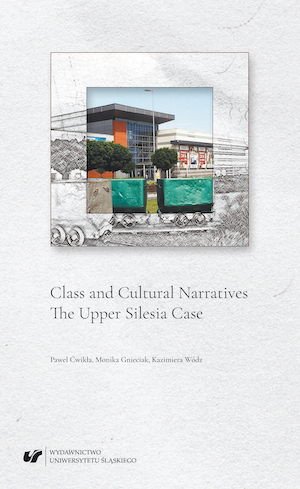
The Silesian Voivodship exemplifies a region where the industrial past has left a permanent mark on spatial forms, social relations, institutions, patterns of culture as well as collective identifications and individual biographies (Wódz, 2013: 7). At the same time, the geographical location of Upper Silesia has determined its cultural character – in its over thousand years long history it belonged to various political, civilizational, economic, social and cultural orders: Polish, Czech, Prussian or German (Geisler, 2009: 67). Hence, Upper Silesia is a typical example of a borderland, where different ethnic groups and distinct cultural traditions intermingle (Wódz, K., Wódz, J., 2006: 12). Add to this the peculiarity of settling Upper Silesia in the time of the Polish People’s Republic, unification related to the dynamics of the national culture of every day and popular culture or ― in broader terms ― globalisation and the dissemination of definite patters and lifestyles that accompany it. All of these contribute to the validity of the question of the region’s contemporary cultural identity. (...)
More...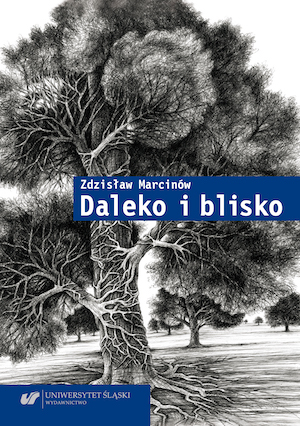
Keywords: emmigration; 20th century prose; Eastern Borderlands; Second World War; angling
"Far away and yet so near" is a metaphoric title that somehow defines all the collected texts. It embraces what is here and now as well as what seems distinctive, imperishable and… essential? Even if not – still important and inseparable. All of the discussed writers – Konwicki, Kuncewiczowa, Stojowski, Vincenz, Hemar, Wierzyński, Filipowicz, Pavel – are without a doubt virtuosos, who undertook a breakneck task of engraving their pivotal, fundamental experiences in literature. The collection includes essays sharing a clearly determined theme – autobiographic works of writers, who experienced war, occupation, Eastern Polish and Galician myths, as well as post-war political turmoil – including Stalinism, social realism and the Polish thaw. The inclusion of the trope of angling, present in the writings of Kornel Filipowicz and Ota Pavel, an exceptional author from the Czech Republic, may come as a surprise. It is easy to underestimate its importance, but the theme is by no means trivial. The moments of solitude in the wild, with a fishing rod as a sole companion, were cherished times of escape from the war trauma.
More...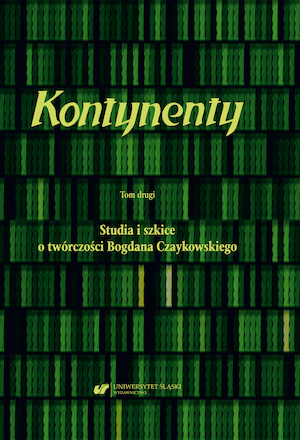
Keywords: Bogdan Czaykowski; 20th and 21st century Polish poetry; Polish poetry in Canada; interpretation; biography; emigration
The edited volume "Continents. Vol. 2: Studies and essays on the work of Bogdan Czaykowski" attempts a multifaceted reinterpretation of the work of one of the most interesting Polish poets of the 20th and 21st centuries, boasting a rich, dramatic biography. Bogdan Czaykowski (born in 1932 in Poland, died in 2007 in Canada) was, among other things, a poet, member of the London-based Continents poetry group, translator, literary critic, anthologist, editor of numerous academic works, and long-time lecturer at the University of British Columbia in Vancouver. The 27 articles in this volume offer a comprehensive look at Bogdan Czaykowski's work — his poetry, prose, essays, literary criticism, sociology, translation and editing, and activity as an epistologist and interlocutor. In view of the number of inedites left in the writer’s archives, this volume also contains lesser-known works, such as "Diary from India", the poems “The Epitaph” and “Farewell”, important critical and literary sketches originally written in English, and, additionally, a "Calendar of the Life and Works of Bogdan Czaykowski", as well as an extensive bibliography of his oeuvre.
More...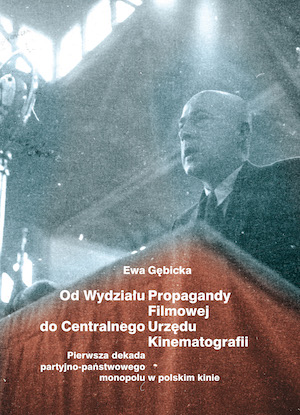
Keywords: politics; cinematography; cinema; film; cinemas; repertoire
The book concerns Polish cinema perceived as an institution of social life shaped by political, economic and artistic factors. The author focuses on the infrastructure of filmmaking as well as the practices of film production and distribution. By examining the impact of politics on the material equipment of the cinema, the attitudes of filmmakers and audiences, the shape of the systems of film production, distribution and exploitation, and the nature of the links between them, she aims to identify the basic regularities in the functioning of this institution under conditions of state monopoly and party dictate.
More...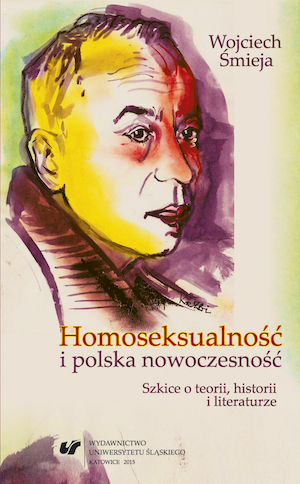
Keywords: Polish literature; homosexuality; modernity; masculinity; queer;gender;
The first out of five parts that comprise Homosexuality and Polish Modernity.Sketches on Theory, History, and Literature, presents theoretical and methodologicalissues. Articles in this part provide the quintessence of discussions onthe history of sexuality, methodology (constructionism vs. essentialism), thestatus of psychoanalysis, as well as their relations with the queer theory. Themost important postulate that comes as the aftermath of these disputes is thequestion of extending local knowledge. The reception of international studieshas always been uncritical, the result of which was the acquisition of cognitiveschemata that are not necessarily adequate in the context of Polish studies. Oneof these schemata might be the assumption that the category of the homosexualemerges in Polish society and culture according to the same models (defined byMichel Foucault) as it happened in Western Europe. This may, however, lead tothe neglect of the fact that description done by Foucault is not the only possibleone. Furthermore, Foucault himself regarded it as a mere sketch which needsto be specified more precisely. Regardless of the extent to which we considerFoucault’s ideas expressed in The Will to Knowledge as final, we cannot, however,make it part of our everyday life. Therefore, to propose a Polish version of the“history of sexuality” is a burning issue. Otherwise, when undone, it will fail todepict a significant part of our cultural self-knowledge.I satisfy my desire to write of a Polish version of the “history of sexuality”in the second part of this book. I explore the questions of the two homosexualscandals from the turn of the 19th and 20th centuries – that is, a scandal ofPhilip, Prince of Eulenburg, and a case of Oscar Wilde. Both the scandals onthe European scale, are presented in the light of Polish public opinion and thencontemporary politics. I have derived form documents form that époque, namely,the press, the general public texts, etc. The subject of the deeper reflection is therelation between a discursively constructed sexual and gender identity, andPolish national identity (then permanently threatened), which can be easily seenin the case of the scandal of Eulenburg.The subsequent parts deal solely with literature. The part entitled The Geopoeticsof Masculine Sexuality comprises three sketches, where the author analysesthe relations between space and a feeling of desire from the Interwar Period tocontemporary times. The provided analysis seems interesting, since Western Europeanas well as American studies have a tendency to create big-city enclaves offreedom and homosexual ghettos with patterns of behavior and subcultures belongingthere, whereas in the Polish agrarian tradition, such places did not evenspace in Polish culture where this non-normative desire may be able to manifestitself, and in what way this space has been rendered in literature.The fourth part of this book focuses on the personae of Jerzy Andrzejewski.His book, Ashes and Diamonds, has never been genuinely interpreted through theprism of gender studies. By presenting four approaches to Andrzejewski, the authormakes an attempt to do so. The author of Ashes and Diamonds, posthumouslydoomed to literary purgatory, while in his lifetime interpreted from the politicalperspective, appears as a tragic misfit, and his works are viewed as a record ofrejection, erotic obsession, and self-humiliation.The final part of the book is devoted to the homosexual personae as well asmotifs in the works of Stanisław Vincenz, Michał Choromański, Wilhelm Mach,and Krzysztof Boczkowski. Moreover, there is a sketch on the “ideology of thebody” in the literature of the Interwar Period. The books analyzed here are readrather separately; however, juxtaposed next to others, they prove that even if notall of us “have a pink tongue” (the term used by Błażej Warkocki), it is still possibleto hear it — this pink tongue — in literature more frequently than we might think.
More...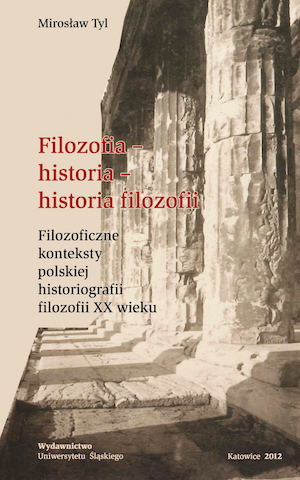
Keywords: filozof; historyk filozofii; XX wiek; Polska; badania historycznofilozoficzne
Książka jest historyczno-problemowym studium ukazującym na wybranych przykładach, w jaki sposób polscy historycy filozofii i filozofowie XX wieku realizowali filozoficzne cele w ramach badań historycznofilozoficznych. Refleksja nad przeszłością filozoficzną nie musi bowiem stanowić celu samego w sobie, lecz określając swe punkty wyjścia i zadania w kontekście aktualnej sytuacji filozofii, może odsłaniać i podejmować dziś ważną problematykę filozoficzną, stając się w ten sposób formą filozoficznej wypowiedzi. Tak rozumiane filozoficzne zaangażowanie historii filozofii przedstawia autor w ramach dwóch nakładających się na siebie płaszczyzn tematycznych. Pierwsza – na podstawie analizy ukierunkowanej na filozoficzne treści – ukazuje strukturę, genezę i funkcję koncepcji studium dziejów filozofii, które opracowali tacy między innymi badacze, jak: Maurycy Straszewski, Ludwik Chmaj, Leszek Kołakowski, Marek J. Siemek, Stefan Swieżawski, Barbara Skarga. Druga zaś poszukuje filozoficznego wymiaru samych studiów historycznofilozoficznych, które na podstawie opracowanych koncepcji badawczych prowadzili ich twórcy.
More...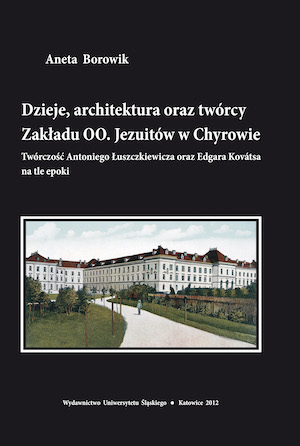
Keywords: architecture; history; historicism; 19th century; Chyrów; Kraków; Galicia; education; pedagogy; Jesuits; Jesuit schooling; Antoni Łuszczkiewicz; Edgar Kovàts; Gottfried Semper
The academic-education centre in Bąkowice near Chyrów is a phenomenon encompassingmany problems. Its 50 years of existence should be considered not onlyat the material level, although it is most interesting for an art historian. Making anattempt to deal with this type of object one cannot forget many issues going beyonda tightly-understood history of art, entering the area of the history of culture, pedagogyand even theology. However, the most primary and leading thought of the bookwas “to save it from being forgotten”, not the phenomenon of Chyrów as such (becauseaccording to the author of the text it is still alive, though it will have to be remindedyounger generations more and more often with time), but a material basethat underwent devastation and disperse. This is an inventorying issue to find,undust and describe each, even the least valuable thing that belonged to the equipmentof the centre or chapel, reconstruct the appearance of the rooms, chapels andbuilding surroundings on the basis of the photography, to bring a former grace ofthis place back at least in this way.The second, equally important aim of this work is to present the object of the19th century architecture which has become a satisfying subject of research formany art historians these days. In the case of the centre in Chyrów, we deal withthe work that is not easy to analyse in a formal-genetic way. Experiencing the objectsof the 19th century art, in the case of which traditionally understood aestheticcategories are not sufficient, we face broader problems that focus the phenomenonof the 19th century as such – its art, philosophy, education, pedagogy, spiritual lifeand, above all, socio-economic problems taking a lead at this time. A presentation ofcentres such as the one in Chyrów also aims at propagating a different perspectiveon the 19th century works of art, and the inclusion of them into the world of valuesand filling the apparently empty crust with a meaning.A broad spectrum of issues raised in the very work was determined by the veryresearch subject, which, as has already been mentioned, is a phenomenon. The authorhad to enter the areas usually unknown to the art. Historians, such as pedagogyin general and Jesuit pedagogy in particular. She also had to, at least in anoutline, present the system of the functioning of the centre and a daily life of its fosterchildren. This way, despite no ambitions to exhaust the topic, the attention thatin the case of a traditional perspective focuses on the work of art, was dispersed.What is more, the obligation required a wider presentation of the profiles of the authorsof the architecture of the centre: Antoni Łuszczkiewicz and Edgar Kováts.The book consists of six parts in general. The first presents the history, organizationand functioning of the academic-education centre of Jesuit fathers in Chyrówcovering the period of almost 50 years of its existence. It also describes a pedagogicsystem used in this institution. The next chapters are devoted to the issues connectedwith an architectural frame of the centre, The history as well as a descriptionof the main building, accompanying buildings and the surroundings as well assculptures and small architecture situated within its scope. Further on, the profilesof and architectural activity of the authors of the material tissue of the centre, i.e.Edgar Kováts, a professor of the Lviv Technical University and the author of the socalled Zakopane measure (sposób zakopiański), and Antoni Łuszczkiewicz,a slightly-forgotten architect from Cracow were presented. Selected realizationswere described and artistic as well as aesthetic attitudes of both architects werepresented. A summary of the parts of the book in question is a chapter devoted tothe academic-education centre of Jesuit fathers in Chyrów as an architectural workof art. It provides a formal-genetic analysis of the team. An important element ofthis publication is appendices including little-known sources presenting the historyof the centre and the history of its authors. These are regulations and rules of thecentre from 1905, a report from the scholarship of the countin Joanna Ledóchowskafoundation made by Antoni Łuszczkiewicz, a list of often very precious and currentlylost books from the centre library, a programme of the very centre from the1880s, an introduction to Sposób zakopański from 1899 by Edgar Kováts and hiscorrespondence concerning the foundation of the Sacred Heart of Jesus Christchurch in Cracow illustrating the archirect’s views on art.When working on the history and architecture of the academic-education centreof Jesuit fathers in Chyrów the source materials from the very epoch and archivematerials derived from among others the collections of the Archive of the MałopolskieProvince of the Association of Jesus, the Archive of the Jagiellonian Universityand the State Archive.
More...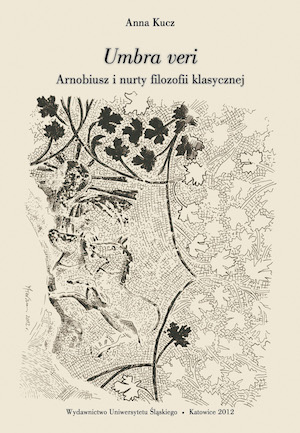
Keywords: classical philosophy
The publication constitutes an attempt to show dynamics of the changes of a Europeanthough taking place in a clash of the ancient civilization with Christianity. Thework describing the very clash is Adversus Nationes by Arnobius.The author presents the views this philosopher held on a human soul, human being,its origin, as well as human condition, human fate and its images of God and gods.She shows to which extent various trends of classical philosophy reflect in conceptionsproposed by an apologist.The first chapter presents a person of a writer and a historio-literary context of thecreation of Adversus Nationes. The second chapter is devoted to a presentation ofArnobius’ views on human being creation and condition. She underlines the importanceof the knowledge of certain mechanisms that played a decisive role in shapingArnobius’ worldview (among others the influence of pre-Socratian philosophy onArnobius’ views on a human soul). The anthropological problems are discussed puttinga special emphasis on a human soul and its (im)mortality. The third chapter criticizesa pogan anthropomorphism put forward in apology. The fourth chapter raises the issuethe author calls „umbraverization” while the last two chapters touch upon human cognitivecapacity.The area linking all phenomena is a tight relationship and bonds between twopermeating worlds, an ancient and Christian one in the context of searching the truth.Despite this strong correlation in Adversus Nationes, the pressures between the formerculture of a Greek-Roman antiquity and Christian culture under development are reflected.The originality of Arnobius does not consist in a fact that he created a theologicalor philosophical work, but in basing his apology on the worldview popular in ImperiumRomanum and assumptions of classical philosophy.
More...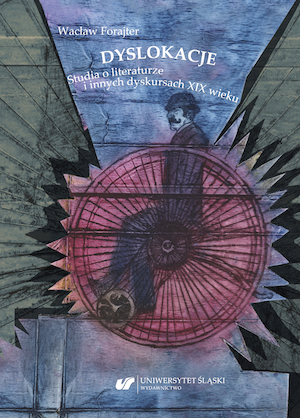
Keywords: public discourse; literature; nineteenth century; social history; cultural history
The book Dislocations. Studies in Literature and Other Discourses of the Nineteenth Century addresses a range of issues related to nineteenth-century literary circulation with particular emphasis on literary works and journalistic and memorial texts. Assuming that the transmission of ideas and lifestyles in this era took a much more dynamic shape than in the pre-modern era, the author tries to diagnose the forms of experience typical of the nineteenth century. This period became a time of "great change," at least for some individuals and social groups, when old forms of existence collapsed and new ones only gradually emerged. Other communities experienced these changes to little or no extent. Due to the impossibility of synthesis, this characteristic coexistence of tradition and change is treated in the monograph from the point of view of case studies.
More...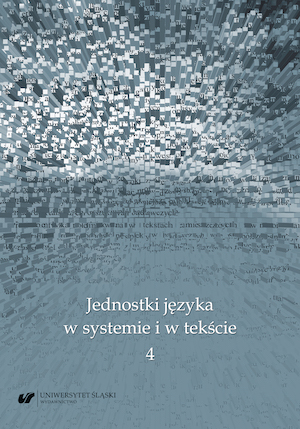
Keywords: Slavic linguistics; comparative linguistics; lexicography; vocabulary; semantics; pragmatics
The set of problems engaged in the texts which are presented in the monograph reflects the multifariousness of research perspectives in modern Slavic linguistics with reference to both traditional and novel methodological approaches. The authors’ focus has to do with the problems of the description of the units of the Polish, Russian, Ukrainian, Czech and Croatian languages at the particular levels of these languages. The linguistic units are examined not only as elements of a system but also as components (which are varied genre-wise) of early and modern texts. Apart from the analyses which draw from structuralist traditions there are also ones in which linguistic phenomena are considered in a broad social-political-cultural context. The publication is a collection of pieces which are devoted both to one language as well as comparative studies: Polish-Russian, Polish-Czech, Polish-Croatian, Russian-Czech ones. There are also texts which are devoted to the problems of translatology. The broad range of problems which are engaged by the authors from Poland and beyond enables the reader to familiarise himself or herself with the areas and trends of work conducted by the particular academic centres. We hope that it will also become a source of inspiration for further research endeavours.
More...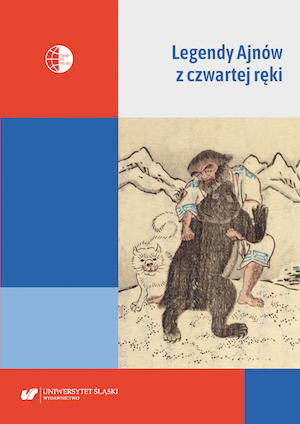
Keywords: Ainu; Ainu people; ethnic group; Bronisław Piłsudski; Japan
This publication presents Ainu people, a mysterious culture of the Far East. Ainu people have long inhabited the Japanese island of Hokkaido, hence the chapter is concerned with the social context and status they have in Japan. An important chapter of this publication presents Bronisław Piłsudski, who lived among the Ainu people for a long time. He studied their culture and language thoroughly, which was preserved on Edison’s phonograph, and this made him known to the Japanese (in fact, only after almost a century) and Ainu. A list of memorials and memorabilia associated with Piłsudski is also included in this publication. However, the most important aim of the study is presenting the legends of the Ainu people. The legends have been translated into Polish (from Russian, into which they were translated from Japanese) and annotated with linguistic and cultural commentary.
More...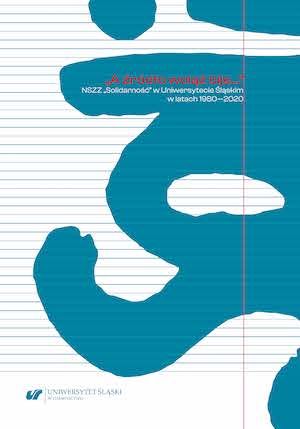
Keywords: ”Solidarity”; University of Silesia; Department Committee ISGTU ”Solidarity” at the University
The publication ”And the spring is still flowing…’Solidarity’ at the University of Silesia between 1980 and 2020" presents the history of ISGTU ”Solidarity” at the University, the circumstances of creating its structures, specific activities undertaken for the democratization of the country and the academic community. It also shows the mechanisms of repression applied to the union during the material law period, especially numerous internments. The analyses were based on private materials (mainly correspondence) and documents preserved in the Department Committee and press releases (including interviews) and studies on the history of the University of Silesia. The genesis of ISGTU ”Solidarity” at the University of Silesia was presented in the context of national events. The current organization of the union and its functioning in the years 1989–2020 was also described.
More...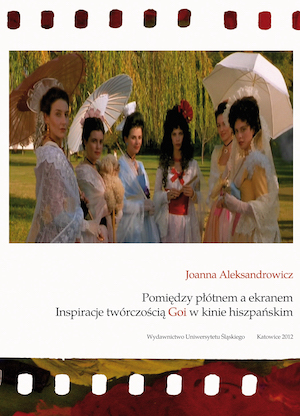
Keywords: Goya; Spanish cinema
The work depicts artistic output of Francisco Goya y Lucientes as a source of inspirationin the Spanish cinema by basing on the examples of 81 films from the years1926—2011 (among which only 14 were distributed in Poland). Most of them arefeature film, but there are also documentaries, TV series’ as well as animations. Theaim of the book is to show — on the ground of film studies — how the perception ofGoya in his homeland has been changing in consecutive stages of history, and how,also thanks to the cinema, he has been transfromed into an icon of Spanishness.The methods applied by the author are typical for comparative cultural studies,and they can be inscribed in the current of studies on intertextuality in film. A comparativeanalysis gathering the disciplines of cinema and painting, concentrates on boththe meaning of an artwork, functioning in various socio-cultural contexts, and thestructural aspects that are pertained to its aesthetic layer.Contrary to previous research, the book is the first attempt at such a broad depictionof the subject in question. Up until now, only papers on a short-term basis havebeen written. Their authors focused on the renderings of the painter on screen. Whatis dominant among the studies referred to in the book — altogether 350, mainly writtenin Spanish — are works describing the oeuvre and life of Goya and outlining therole of an artist in the Spanish culture as well as socio-political conditions of theepoch he lived in. It was essential to refer to first of Goya’s biographers, and confronttheir relations with survived letters of the painter. The publications on film andpainting correspondence also appeared useful. The same can be said about monographsfrom the field of history of Spanish cinema.The introduction of the film references’ peculiarities would have been impossiblewithout outlining the context of Goya’s works and their reception in the epochs thatfollowed. Therefore, the first of the book’s three parts constitutes an attempt to highlightthose features of oeuvre and life of the artist that became magnetic to filmmakers.The conceptions seeking the origins of film visual imagination in the master’slate works were presented together with the roots of his romantic legend that echoedin all of his on-screen depictions. Also, the issue of national identity has been touchedupon, the complex character of which found its expression in Goya’s paintings and hismajor cycles of graphics. Aside from the map of diverse references that prove constantpresence of the painter in the culture of his country, the inspiration of Goya inthe areas of visual arts, literature and music has also been shown. The purpose of theabove was to depict the references in the films as a part of particular cultural continuity.On thus drawn background the subsequent parts of the work has been presented,which were devoted to film studies research as such. In the second part, three maincurrents according to precise source of inspiration have been distinguished. The firstone concentrates on the figure of Goya himself, recurrent on screen as a main characterof biographical films, but also as a supporting character in historical films. Thesecond one is the war of independence, iconography of which is frequently present intales about other conflicts as well, especially the Spanish Civil War. The third area ofinspiration is constituted by varying social contexts — ranging from the images ofmonarchs and aristocracy to that of poverty and superstition, through bullfighting,scenes of folk’s life, religious motives, Inquisition, marriage, prostitution, and insightfulanalysis and critique of morals.From such a division of film thematic reminiscences result three main functionsof painting inspirations in cinema. Aside from biographical aspect, they are: usingoeuvre in rendering the climate of a given epoch in historical films, and placinga painting or a graphic in another contexts, in which they gain new, often surprisingmeaning and prove the universality of the artistic vision.The analysis of the film material have let us concurrently highlight the changes inperceiving Goya reflected by the cinema largely connected to transfromations in thesphere of politics. In the age of silent cinema, before the civil war, a given artists’works helped to build a colourful image of Spain from the period of the 18th and 19thcenturies, intertwined into national and political threads. The films created after 1939were subdued to Fracoist ideology in both presenting the painter image and selectiveversion of his oeuvre, restricted in that time to pastoral images from the folk’s life andearly religious paintings. On the other hand, Goya’s later works were a source of inspirationto opposition directors who created their films at the twilight of dictatorshipor in the first years after Franco’s death. The period after establishing democracy didnot put down the need to confront works of the great painter from Aragon, stillaccompanying filmmakers in their reflection on past and contemporary Spain.The last part of the book, similarly as in the case of thematic threads, can betreated as kind of general conclusion devoted to aesthetic issues. Thus, the followingtopics have been discussed: utilizing portraits by Goya in depicting historical figures,the role of requisites taken from his paintings and graphics, the scenery functions inthe artist’s oeuvre and its influence on shaping filming space. The question of shotcomposition has been discussed as well as the problem of frame, colour andchiaroscuro nuances, and the particular types of references — the formula of “alivepainting”, intertextual punctum, quasi-quotes and cinema-painting. The above haveundergone metamorphosis in the subsequent decades of the film history — from beingprimarily blatant as a painting re-created on screen, towards less and less literal andmore and more veiled references.The present studies, designed to show Goya as a painter still relevant today —witness of his epoch, at the same time transcending far beyond it with his thoughts —open a field for further, more precise researches, directions of which were marked outin the book’s conclusion.
More...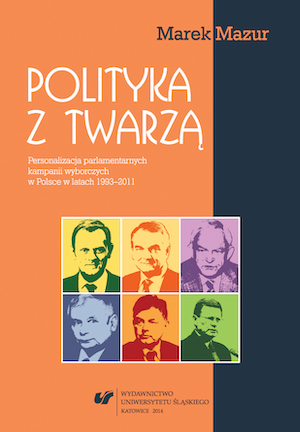
Keywords: politics; Parliamentary Campaigns in Poland
The main goal of this study is the verification of a hypothesis/idea of centralizedpersonalization during Polish electoral campaigns. Because of its goal and implementedmethodology, such research project is unique among research presented in scientificliterature thus far.The work has a descriptive character; it is congruent with treatments from the fieldof political communication, combining approaches of communicology and politicalscience, in that it expresses an attempt to include in the analysis the circumstancesof election campaign personalization and factors specific to mediacentric and political-scientific perspectives, as well as because of the fact of recognizing media contentin political party communication. Election communication research includes six Polishparliamentary elections from the years 1993—2001. Along with an analysis of communiquécontents, published in information media, as well as communiqué prepared bypolitical subjects contending in the elections, basic analysis methods within the studyare historical-comparative and statistical data analyses.The specific objectives of the treatment are:— Description of circumstances of the political communication personalization thesison the level of mediatization of politics and political campaign professionalizationtheories;— Analysis of the trend occurrence and characteristics of the electoral campaignpersonalization trend based on empirical research conducted in western-Europeanparliamentary democracies;— Recognition of conditions of electoral campaign personalization in parliamentaryelections in Poland;— Analysis of the trend occurrence and characteristics of media personalization inPolish electoral campaigns based on opinion-forming press research;— Analysis of the trend occurrence and characteristics of strategic personalization inPolish electoral campaigns based on political TV advertisement research.
More...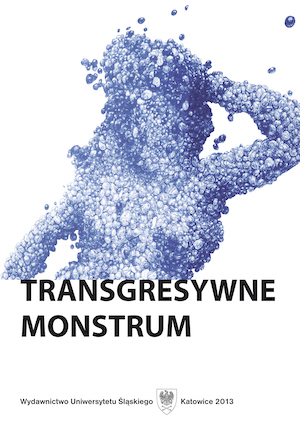
Tom Transgresywne monstrum ma na celu podjęcie dyskusji związanych z monstrualnością, potwornością i deformacją we współczesnej kulturze. Autorami tekstów są młodzi naukowcy, w przeważającej części kulturoznawcy specjalizujący się w różnych dyscyplinach, a także historycy sztuki. Interdyscyplinarne podejście do tematyki powoduje, że kategorię monstrum można odczytać na wielu poziomach. Antologię podzielono na cztery części: CZŁOWIEK i CIAŁO, PRZEDSTAWIENIE, GRANICE, ŚMIERĆ, które zbierają najmocniej uwypuklone problemy, którymi zajęli się autorzy. Wszystko to zostało ukazane także w kontekście zagadnienia transgresywności, rozumianej nie tylko jako przekraczanie granic. Adresatem książki są wszyscy zainteresowani problematyką monstrualności, potworności w obszarze kultury, w takich dziedzinach jak teoria, historia kultury, literatura, sztuki wizualne, film, socjologia kultury, filozofia, teatr.
More...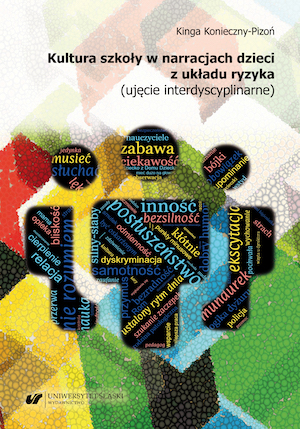
Keywords: school culture; total school culture; ontological safety; at-risk child; psychocultural concept of education
As the subject of consideration in the monograph, I have made the image of school, represented in the narratives of children at risk (10-14 years), living in one of the cities of Upper Silesia. "Cultural optics" of the perception of school by children from the system of risk, who are, as it were, ambassadors of its potentials and limitations, allows for the exploration of new research perspectives, including undertaking work towards searching/discovering assumptions, norms of co-creation of a positive school culture, taking into account the "compromise" between the quality of the didactic work of the school and the sense of well-being of students, teachers, and parents. The theoretical considerations are inspired by J. S. Bruner's concept of psychocultural approach to education.
More...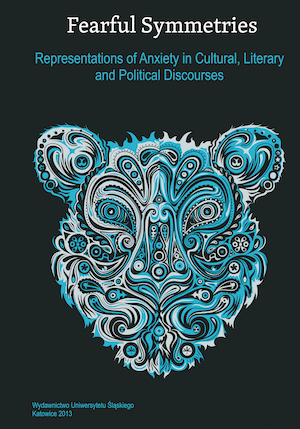
Keywords: Cultural Discourse; Literary Discourse; Political Discourse
Tom zbiorowy Fearful Symmetries („Straszliwe symetrie” – w aluzji do zwrotu, jaki pojawia się w jednym z wierszy Williama Blake’a) jest pokłosiem przedsięwzięcia naukowego o nazwie „Civilization and Fear” („Cywilizacja i lęk”), którego zwieńczeniem była międzynarodowa konferencja interdyscyplinarna zorganizowana w roku 2010 przez Instytut Kultur i Literatur Anglojęzycznych. Celem konferencji było prześledzenie przejawów niepokojów i lęków, jakie budzi cywilizacja, a które znajdują swój przejaw w rożnych zjawiskach należących do szeroko pojmowanej kultury. W Fearful Symmetries pole zawężone zostało przede wszystkim do obszaru tekstu. Nie chodzi tu zatem o lęk w sensie abstrakcyjnym – zamieszczone w tomie eseje skupione są na przejawach niepokojów i lęków wyrażonych w formie dyskursywnej, a zatem w określonym historycznie i kulturowo kontekście. Poszczególne artykuły nie przynoszą odpowiedzi na pytanie: „Jaka jest natura lęku?” Dają jednakże wgląd w mechanizmy, dzięki którym obawy i lęki, szczególnie te związane z postępem cywilizacyjnym, znajdują wyraz w słowie i przez to zostają odziane w taką lub inną formę dyskursu. Chociaż bowiem lęk jest przeżyciem z natury osobistym a nawet intymnym, a przez to – zdawać by się mogło – niekomunikowalnym, to jednak funkcjonuje on również w wymiarze dyskursywnym, żywi się językiem i znajduje swoje naturalne środowisko w kulturze. Publikacja nie jest jednolita pod względem metodologicznym, nie narzuca też jednego i wyłącznego punktu widzenia; za wyjątkiem naszkicowanego wyżej pola tematycznego poszczególne artykuły nie pozwalają się sprowadzić do wspólnego mianownika. Jako całość książka unaocznia zatem, jak zróżnicowane są dyskursywne przejawy lęku i jak różnorodne potrafią być konteksty owych przejawów. Taka otwartość metodologiczna i światopoglądowa pozwala zdaniem redaktorów tomu żywić nadzieję na opanowanie wielu niepokojów dręczących współczesną kulturę (np. lęku przed wszelkiego rodzaju totalitaryzmami, także w sferze intelektualnej), a w konsekwencji na „ucywilizowanie” strachu jako nierozerwalnie z nią związanego zjawiska.
More...